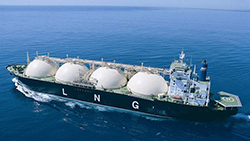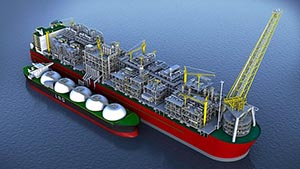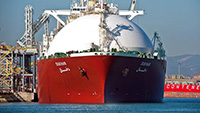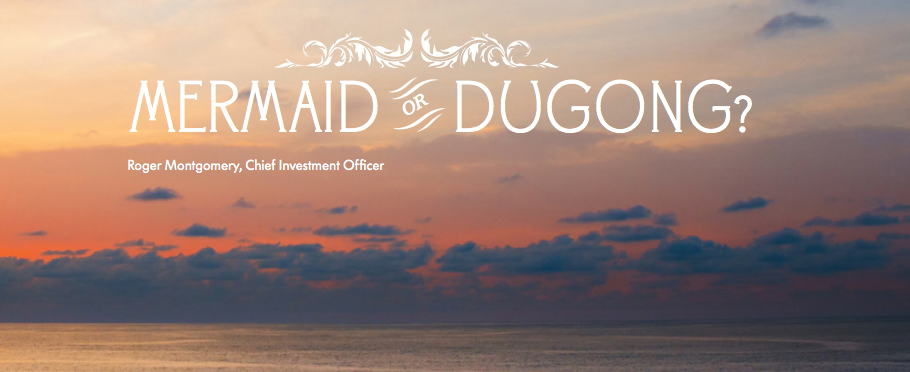Energy / Resources
-

Downer EDI focus on cash-flow generation
David Buckland
February 6, 2014
Downer EDI (ASX:DOW) provides engineering and infrastructure management services to customers in the minerals, hydrocarbons, power and transport sectors. In the past three half-year periods, their revenue has declined sequentially from $4.7 billion, to $4.4 billion, to $3.9 billion. continue…
by David Buckland Posted in Energy / Resources.
- 5 Comments
- save this article
- POSTED IN Energy / Resources
-

Following the gold
Tim Kelley
January 8, 2014

Today’s AFR carries an article on gold prices, and makes the point that this time last year, nearly all analysts who followed gold expected the price to rise in 2013. In contrast, gold experienced its worst year since 1981. continue…
by Tim Kelley Posted in Energy / Resources, Insightful Insights.
-

The Australian based gas exporters (Part 3)
David Buckland
December 12, 2013
The Fukushima nuclear disaster in March 2011 has seen Japan become the world’s largest LNG buyer, with its gas demand boosted by nearly 25 per cent after shutdown of all nuclear power generating capacity. As the chart below shows, this has seen the Japanese LNG monthly average price move up to around US$16-$18 per million British thermal units (MBtu). continue…
by David Buckland Posted in Energy / Resources.
- 1 Comments
- save this article
- POSTED IN Energy / Resources
-

A minefield for mining services investors
Russell Muldoon
December 5, 2013
Things are looking tough for the Mining Services sector. Intense competition, falling revenue and lower margins were laid bare in the latest round of Annual General Meeting (AGM) presentations. continue…
by Russell Muldoon Posted in Energy / Resources.
- 11 Comments
- save this article
- POSTED IN Energy / Resources
-

The Australian based gas exporters (part 2)
David Buckland
December 4, 2013
As we discussed in a post last month, it is unlikely that there will be any new Australian offshore “greenfield” LNG projects, except for floating LNG facilities. continue…
by David Buckland Posted in Energy / Resources.
- save this article
- POSTED IN Energy / Resources
-

The Australian Based Gas Exporters
David Buckland
November 21, 2013
There are seven Australian based LNG projects coming on stream over the next five years, which have a combined capacity of 83.2 billion cubic metres (bcm) and account for around 60 per cent of the 138 bcm under construction worldwide. continue…
by David Buckland Posted in Energy / Resources.
- save this article
- POSTED IN Energy / Resources
-

Monadelphous: leader of the pack?
Roger Montgomery
October 28, 2013
Sometimes it’s easy to identify the source of competitive advantage that drives the performance of a great business. For example, it may be intellectual property supported by large R&D investments in the case of companies like Resmed or Cochlear; it may be network effects and a dominant market position in the case of businesses like REA Group or Carsales; or it may be ownership of long life, very low cost resources for a mining company. continue…
by Roger Montgomery Posted in Companies, Energy / Resources.
- save this article
- POSTED IN Companies, Energy / Resources
-

Minerals Industry Jobs – unemployment rising
Roger Montgomery
October 3, 2013
Last week, the President of AusIMM – The Minerals Institute, released the details of AusIMM’s important project exploring the employment status and experiences of minerals industry professionals over the past 12 months. continue…
by Roger Montgomery Posted in Energy / Resources.
- 2 Comments
- save this article
- POSTED IN Energy / Resources
-
Mermaid or Dugong?
Roger Montgomery
September 1, 2013

As the share prices of many mining services companies performed as we have been warning they would, the question we receive from many investors is: is time to wade back in? In the context of Mermaid Marine, we address the question.
Value investors will need great skill to make money from the resource services sector. Pessimists point to $150 billion of mining and energy projects delayed, cancelled or reassessed in Australia in the past 12 months. Optimists argue that there is value aplenty in the sector after horrific share price falls.
The truth is somewhere in between. There is good reason to continuing avoiding the resource-services sector: the Bureau of Resources and Energy Economics (BREE) forecasts the worth of committed projects, or those likely to get to that stage in the next five years, will drop from $256 billion from the end of 2013 to about $70 billion in 2017.
It could get worse if falling commodity projects force a few mega projects to remain in publicly announced feasibility phases, meaning even less work for service providers. Boart Longyear’s terrible earnings result in August and talk that it could breach debt covenants reinforces the danger. Don’t be surprised if a few lower- quality mining services companies go under in the next year or two.
Resource services is not a great industry at the best of times: it is highly leveraged to projects that rely on volatile commodity prices, requires high fixed investment, suffers from rapidly depreciating equipment, and is a price taker. Shrinking profit margins are another huge risk this financial year.
But if all of that doesn’t dissuade you, the question is whether this deteriorating outlook is already priced into valuations. Monadelphous Group, for example, appears to be back in value territory, but it needs to offer a bigger margin of safety, such is
the uncertainty about resource projects. Forge Group and Decmil Group might also be considered similarly.
Then there are resource service providers rising in a falling sector. The well-run Clough group has doubled to $1.44 since late 2012 after earnings upgrades. Accommodation provider Titan Energy Service has soared fivefold in the past 12 months on the back of higher earnings, and Mermaid Marine Australia, which provides vessels for oil and gas projects, has rallied in the past year.
That shows the danger of being deafened by newspaper headlines and market noise about falling mining investments and extrapolating it to all stocks, rather than treating each company on its merits. Value investors should always focus on what matters most: buying exceptional companies at bargain prices. On this score, Mermaid Marine warrants a spot on watchlists.
A 10 per cent share fall would arguably put Mermaid within sight of value territory; and a cheaper entry point could emerge as the sharemarket moves into the traditionally weaker September and October months, and as nervousness about emerging markets and US Federal Reserve plans to ‘taper’ its stimulus program creates higher market volatility. Whatever happens, Mermaid might be worth watching.
Like Clough, Mermaid is heavily exposed to the energy sector. It provides marine logistics to offshore oil and gas projects and has supply bases in Dampier and Broome. The core operation comprises a fleet of more than 30 ships; the Dampier base has a private wharf and ship-repair facility; and the Broome supply operation is a 50/50 joint venture with Toll Holdings.
Choosing service providers with a bias towards higher-margin oil and gas projects rather than mineral developments is a smart move. Committed liquid natural gas and petroleum projects were worth more than $200 billion at April 2013, according to BREE. That dwarfs all other products (by commodity) and there are still several big energy projects in publicly announced feasibility stages.
The energy boom has been a huge tailwind for Mermaid. Over five years, the company has an average annual compound return (including dividend reinvestment) of 21 per cent. Over one year to August 30, it has returned 26 per cent – a good result in such a weak sector.
The latest profit result impressed, given cyclone-affected vessel utilisation rates in the third quarter. Revenue rose 18 per cent to $449.5 million and after-tax net profit lifted 18 per cent to $60.3 million for 2012-13. Earnings per share rose 15 per cent to
26.9 cents and a 12.5 cent full-year dividend was declared.
A flat result in the vessels division (63 per cent of revenue) was offset by strong results in the supply base and slipway (maintenance) divisions.
Another concern is the strength of Mermaid’s sustainable competitive advantage. Being the dominant vessel provider in Australia, and having an integrated offering of vessels, supply bases and maintenance gives it a significant competitive advantage over smaller rivals. It also has an excellent industry reputation.
However, this advantage is arguably hard to scale overseas and this is relevant given the company has signalled international expansion as a key strategic priority. Different union arrangements and regulatory regimes in other countries may limit growth, and currently only 2.9 per cent of Mermaid’s revenue comes from its offshore operations.
Mermaid is heavily exposed to a small number of energy projects in Australia that will start to wind down in the next few years. It still has solid, long-term earnings prospects, given these projects will require plenty of ongoing vessel and supply-base support, but growth could plateau.
Mermaid ticks plenty of boxes for value investors. Return on equity (ROE) has hovered around 17 per cent in the past seven financial years and peaked at 21 per cent in FY10. Although solid rather than spectacular, Mermaid’s ROE consistency is notable in a volatile sector.
Cash flow generated from operations has soared from $18.1 million in FY07 to $70.8 million in FY13. Gearing (net debt/equity) of 30 per cent at the end of FY13 was hardly excessive given Mermaid has invested more than $200 million in fleet renewal and infrastructure development programs over five years. And it has $58.8 million in the bank.
Mermaid said its medium-term outlook “remains strong”, with construction on mega energy projects such as Gorgon ($52 billion) continuing through FY14 and FY15, near-shore works underway for Wheatstone ($29 billion), and several other project tenders yet to be awarded or called for.
The company announced in August it had won a $100 million contract to provide tug and barge support for part of the Chevron- operated Gorgon project – an encouraging result given the risk of lower fleet-utilisation rates as construction activity at Gorgon trends lower in the next few years.
Earnings from supply bases, just over half of Mermaid’s FY13 earnings before interest and tax, look more vulnerable as energy construction slows in the next few years. This might explain why management is increasing the company’s exposure to production- support contacts and new project activity here and overseas.
Mermaid should have decent earnings momentum in FY14 and FY15, but the big question is: what happens when investment in giant energy projects tapers after that? Here at Montgomery, we don’t treat that question lightly: will Mermaid be left with a huge earnings void that is hard to replace? And when will the market price this in? New enterprise bargaining agreements and potential for rising industrial disputation are other threats.
According to its valuations, Montgomery expects Mermaid’s ROE to ease from 16 per cent in FY13 to 15 per cent over the next two years and 14 per cent in FY16, based on consensus analyst forecasts. Value investors should seek companies with rising, or at least stable, ROE, and at least above 15 per cent, for it usually leads to higher intrinsic value and ultimately a higher share price.
At $3.77, Mermaid remains overvalued. Value investors should look for companies that can deliver strong increases in intrinsic value in future years. Given the uncertainty surrounding 2015 and beyond, the jury remains out on the score for Mermaid.
Investors should also demand a higher margin of safety from resource-service stocks, given uncertainty about the project pipeline and rising earnings risks. Mermaid might need to trade closer to $3.00 to tempt long-term value investors.
Although not exceptional, Mermaid has been of high quality for a long time and after share price gains this year is only modestly overvalued.
This article was written on 1 Septemeber 2013. All share and other prices and movements in prices are to this date.
by Roger Montgomery Posted in Energy / Resources.
- save this article
- POSTED IN Energy / Resources
-

No V-Shaped Recovery
Roger Montgomery
August 26, 2013
Those of you who are boat owners would know all about the V-Sheet – distress signal. A ‘V’ is also one of the shapes a recovery can take. But while the ‘V sheet’ is an apt alphabetical metaphor for the state that mining services is now confirmed to be in, it isn’t the right shape anyone should be expecting recovery to take. continue…
by Roger Montgomery Posted in Energy / Resources, Insightful Insights.